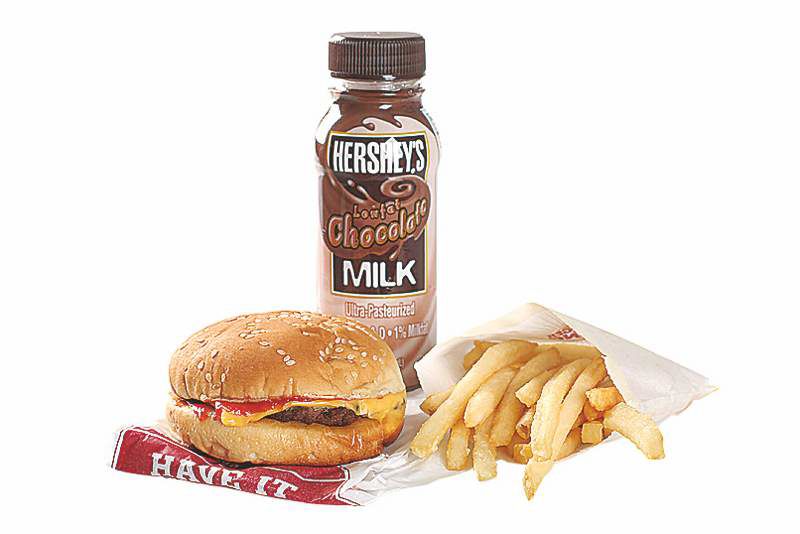Kid friendly, not kid healthy
Published 5:00 am Thursday, August 28, 2008

- WORSE – Burger Kings Kids MealIncludes: Double cheeseburger, french fries, chocolate milkNutrition: 920 calories, 18.5 grams saturated fat, 4.5 grams trans fat, 1550 milligrams of sodium
Since McDonald’s introduced the iconic Happy Meal in 1979, nearly every fast-food chain in the nation has come to offer a meal specifically for kids. But a recent analysis by the Center for Science in the Public Interest found that nearly all kids’ meals at chain restaurants exceed nutritional guidelines for calories and sodium, and half are too high in saturated fat and trans fat content.
The group analyzed 1,474 possible choices at 13 of the nation’s largest restaurant chains. Some 93 percent contained more than 430 calories, which is one-third of what the Institute of Medicine recommends children ages 4 to 8 should eat in a day.
“Parents want to feed their children healthy meals, but America’s chain restaurants are setting parents up to fail,” said Margo Wootan, director of nutrition policy for the center. “McDonald’s, Burger King, KFC and other chains are conditioning kids to expect burgers, fried chicken, pizza, french fries, macaroni and cheese and soda in various combinations at almost every lunch and dinner.”
For example, a McDonald’s cheeseburger Happy Meal with fries and a soda contains 640 calories, 7 grams of saturated fat, 1 gram of trans fat and 940 milligrams of sodium. All four of those totals exceed recommendations for young children.
At five chains — KFC, Sonic, Jack in the Box, Chick-fil-A and Taco Bell — every kids’ meal combo exceeded the calorie limit. Other chains had only a handful of meals with a reasonable calorie limit.
About 45 percent of meals also exceed recommendations for saturated and trans fat intake, and 86 percent exceeded recommended sodium levels. That’s alarming, the CSPI scientists said, given the increased prevalence of high cholesterol and high blood pressure among children.
“People may not get a heart attack until their 50s or 60s, but arteries begin to clog in childhood,” Wootan said. “Most of these kids’ meals appear to be designed to put America’s children on the fast track to obesity, disability, heart attack or diabetes.”
The analysis found only 15 meals — about 1 percent — that met the nutritional guidelines for all four categories considered. Subway, the only chain that doesn’t offer soft drinks as part of its kids’ meals, came out on top, with eight of its 18 meal combinations passing the test. Chili’s, Denny’s and Arby’s also had at least two nutritionally appropriate meals.
Studies suggest that children now get about one-third of their calories eating out — twice the amount consumed outside the home 30 years ago. Fast-food chains have taken steps to provide some healthier options, offering fruit and milk as choices with the meals instead of fries and soda. Burger King recently launched Apple Fries, fresh apples sliced in the shape of french fries.
Substituting a fruit cup and a juice box for fries and a soda would cut the total calories in an Arby’s popcorn chicken meal from 720 calories to 430 calories.
Many restaurants offer milk as an option, but some continue to offer whole milk rather than reduced-fat milks. In many meals, switching to milk doubled the saturated fat content.
The center called on chains to make healthier options the default on meals. According to the report, Disney has made this change in its theme parks, and more than 70 percent of parents stick with the healthy options. Most now offer fries and soda unless parents ask for the alternatives.
The center also called on restaurants to provide greater nutritional information on the menu. Some chains provide information on the packaging, but customers don’t see that until after they’ve paid for their meals. And six of the top 25 chains with children’s meals don’t provide any nutritional information at all.






